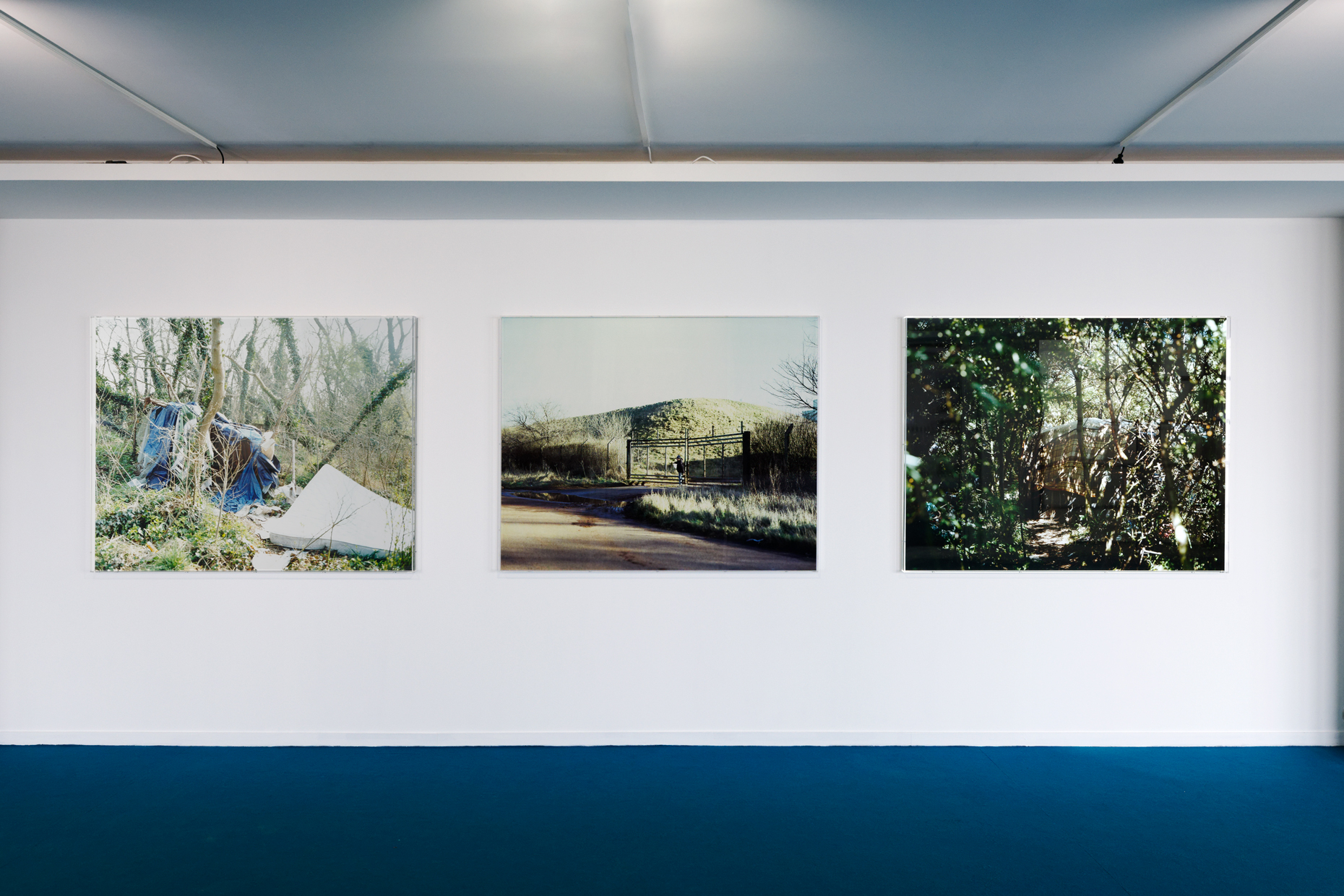GETTING TO ENGLAND by BRUNO SERRALONGUE
22.01.2022 — 30.04.2022
Frac Grand Large — Hauts-de-France

Based on the photographic works in the collection at Frac Grand Large, Bruno Serralongue’s exhibition focuses on his series taken on the outskirts of Calais, a migratory crossroad for refugees from central Europe, Asia and Africa. Since 2006, he has been developing his work over long periods, covering territory, witness to the passage of exiled beings, at odds with the portrayal by mass media.
On-site in 2016, Serralongue highlighted the unique place of each of the different protagonists in the shanty town, where up to 10,000 people had lived, as he witnessed its demolition. Having placed himself at a distance, far from the pathos of the situation, he also questions his own position.
In places where the makeshift camps set up again, he depicts the refugees return and underscores this enduring situation.
THE EXHIBITION
Bruno Serralongue’s exhibition focuses on the series of photographs he captured on the outskirts of Calais, the migratory crossroad for refugees from central Europe, Asia and Africa. From 2006, the artist went to Calais regularly. He started by walking along the rails near the Channel tunnel, photographing the landscape with a mobile camera, a silent witness to these perilous attempts at crossing (Risky Lines). He then returned with his view camera, the exposure time slowing down his process. Discreet, his outfit nonetheless marks his presence as he photographs the “shelters”, the material indication of a passing yet continuous migrant presence. In October 2016, he produced the ensemble Compte-rendu photographique du démantèlement du camp de migrants de Calais connu sous le nom de ‘bidonville d’Etat’ ou de ‘New Jungle’, 24 – 27 octobre 2016 [1]. Presented in the form of “film strips” interspersed with empty spaces as if from an incomplete roll of film, this non-captioned installation places us in a position from which we can decipher the codes that allow us to differentiate between police officers, journalists and refugees. It also forces us to recognize the unique place occupied by the camera. Serralongue proceeds to reflect on this position by continually returning to Calais and remaining at a good distance, far from all the pathos. In places where the makeshift camps set up again, he depicts the refugees return and underscores this enduring situation.
[1] Photographic Report of the Demolition of the Migrant Camp in Calais known as the “State Bidonville” or “New Jungle”, 24 – 27 October 2016
THE ARTIST IN THE COLLECTION AT THE FRAC GRAND LARGE
Close to the documentary style of reporting, Bruno Serralongue questions the notion of objectivity. Since 1993, he has been photographing political and media events. In 2002, the Frac Grand Large bought his series Manifestation du collectif de sans-papiers de la Maison des Ensembles (2001 – 2003 )[1]. The Sangatte refugee camp was closed that same year. Since then, Serralongue has taken an interest in the refugees around Calais and started his “Calais” series (2006-2020); two photographs of shelters from this series are in the Frac Grand Large collection.
In 2015, the French government took on a new strategy of regrouping migrants. Makeshift camps were dismantled and a “new jungle” took root near the Jules Ferry center for migrant assistance. Up to nearly 10,000 individuals from various populations lived side by side within this single bidonville, where violence was a daily concern, until the French State ordered it to be taken down late 2016. Over a period of three days, nearly 800 accreditations were given to journalists and the camp completely demolished. This set of 78 images titled Compte-rendu photographique du démantèlement du camp de migrants de Calais connu sous le nom de « bidonville d’État » ou de « New Jungle », 24 – 27 October 2016 [2] was acquired by the Frac in 2017. The chronological display follows the sequence of events, interrupted by the absences that bring forth the “emptiness at the heart of the event”.
[1] Demonstration by the Collective of Undocumented Migrants from the Maison des Ensembles (2001 – 2003)
[2] Photographic Report of the Demolition of the Migrant Camp in Calais known as the “State Bidonville” or “New Jungle”, 24 – 27 October 2016
BIOGRAPHY
Born in 1968 in Châtellerault, France, Bruno Serralongue lives and works in Paris.
Starting in the early ‘90s, Serralongue has been developing a corpus that questions and reveals the conditions of production, distribution and circulation of media images. Strictly speaking, he’s not a photographic reporter — as he does not work for any media outlet. Serralongue nonetheless documents the news and the events that shape it. In contrast to the spectacular approach of mainstream media, his artistic approach provides a space for off-screen, long exposure and collective demonstration.
SIMULTANEOUSLY AT THE FRAC ÎLE-DE-FRANCE (PARIS)
A large exhibition at frac île-de-france titled « Pour la vie » (“For Life”) is dedicated to various series by Bruno Serralongue around the notion of portrait, be it of individuals or groups of activists.
This exhibition was designed in partnership with frac île-de-france and Frac Normandie Rouen, with support from Air de Paris.
Date(s)
22.01.2022 — 30.04.2022